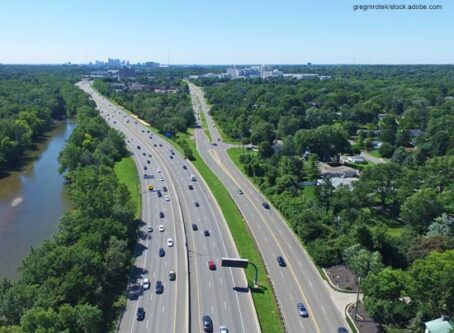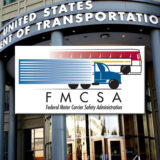Bridge report reveals one-third of U.S. bridges needs repairs
More than one-third of U.S. bridges need repair or replacement, while tens of thousands are structurally deficient, according to the American Road and Transportation Builders Association’s annual bridge report.
ARTBA’s sixth annual bridge report reveals that in 2019 more than 46,000 bridges were structurally deficient, down by nearly a thousand. While the total number of structurally deficient bridges has reduced, the report estimates it will still take more than 50 years to repair all of them at the current rate of repair.
As defined by the Federal Highway Administration, a structurally deficient bridge is one with a rating of 4 or lower on a 0-9 scale on the deck, superstructure, substructure and/or culvert. Essentially, any bridge with weight or speed limits for safety are structurally deficient. The term does not mean the bridge is unsafe. Closures are only recommended for bridges with a rating of 2. Bridges with a 0 or 1 rating require closures.
Structurally deficient bridges made up 7.5% of all bridges, down slightly from 7.6% in 2018. That number has been trending downward since at least 2015 when 8.3% of bridges were structurally deficient. To put that number into perspective, ARTBA calculated the number of structurally deficient bridges span 1,115 miles, which is about the distance from Las Vegas to Seattle. More than 178 million crossings on the bridges occur every day.
Although thousands of bridges deemed structurally deficient in 2018 were fixed and removed from the list in 2019, thousands of other bridges made their debut on the list. According to the bridge report, about 88% of the 2019 structurally deficient bridges were on the 2018 list. Although 6,232 2018 structurally deficient bridges were removed from the list, more than 5,000 other bridges were added.
Of the more than 600,000 bridges identified by the U.S. Department of Transportation’s National Bridge Inventory, more than a third – nearly 231,000 bridges – need some kind of repair work.
Among those bridges, more than 80,000 need replacement. According to the bridge report, repairs for all these bridges will cost about $164 billion. The number of bridges needing repair is equivalent to more than 630,000 miles if placed end-to-end, according to the bridge report. That is about the same distance to make a round trip from New York City to Los Angeles and back again to Chicago.
ARTBA also included notable structurally deficient bridges in its bridge report:
- New York’s Brooklyn Bridge.
- Theodore Roosevelt Bridge in Washington, D.C.
- San Mateo-Hayward Bridge crossing California’s San Francisco Bay – the longest bridge in California.
- Robert S. Maestri Bridge over Lake Pontchartrain in Louisiana.
- Albemarle Sound Bridge and the Lindsay C. Warren Bridge crossing the Alligator River in North Carolina.
- Florida’s Pensacola Bay Bridge.
- Vicksburg Bridge in Mississippi.
- Lacey V. Murrow Memorial Bridge in Washington state.
As a percentage, Rhode Island has the most structurally deficient bridges at more than 22%, according to the bridge report.
By total number, Iowa has the most at 4,575 structurally deficient bridges (19%). West Virginia has nearly 500 more structurally deficient bridges over the last five years, the highest increase by state. The most traveled structurally deficient bridges are on Route 101, Interstate 405 and Interstate 5 in California. Daily crossings on those bridges are as high as 289,000 per day.
On the bright side, Pennsylvania has reduced the most structurally deficient bridges by 1,200. At a distant second is Oklahoma with 753 fewer structurally deficient bridges. Nevada and Texas are tied for the least amount of structurally deficient bridges as a percentage at 1.3%.
Funding for infrastructure has been an ongoing battle at the federal level. The current COVID-19 pandemic has furthered stalled infrastructure investment. According to a news release, ARTBA states “once policy makers shift from a (COVID-19) rescue focus to economic recovery, robust transportation infrastructure investments have comprehensive benefits.”
“Economic recovery from coronavirus begins with strategic road and bridge improvements,” ARTBA President Dave Bauer said in a statement. “Increased transportation investments support direct job creation and retention, while putting in place capital assets that will enhance U.S. productivity for decades to come.”









